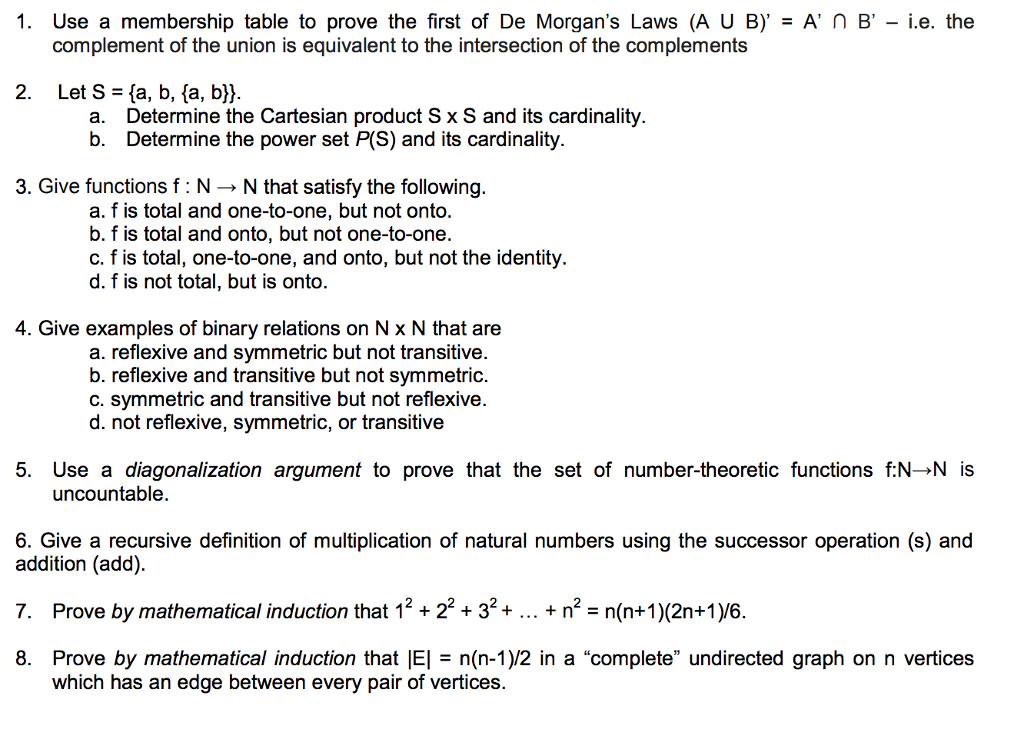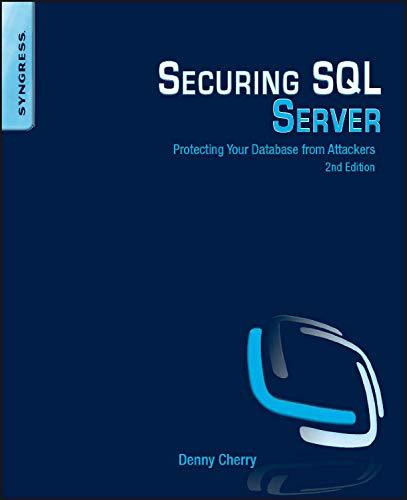Answered step by step
Verified Expert Solution
Question
1 Approved Answer
ANSWER 2-8 please ! 1. Use a membership table to prove the first of De Morgan's Laws (A U B)-AnB- i.e. the complement of the
ANSWER 2-8 please! 
Step by Step Solution
There are 3 Steps involved in it
Step: 1

Get Instant Access to Expert-Tailored Solutions
See step-by-step solutions with expert insights and AI powered tools for academic success
Step: 2

Step: 3

Ace Your Homework with AI
Get the answers you need in no time with our AI-driven, step-by-step assistance
Get Started


